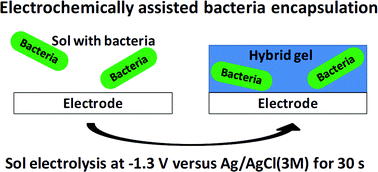Electrochemically assisted bacteria encapsulation in thin hybrid sol–gel films
Abstract
A novel method, based on the electrochemical manipulation of the sol–gel process, was developed to immobilize bacteria in thin hybrid sol–gel films. This enabled the safe immobilization of Escherichia coli on

- This article is part of the themed collection: 2013 Journal of Materials Chemistry B Hot Papers

 Please wait while we load your content...
Please wait while we load your content...